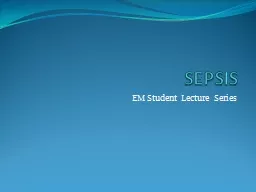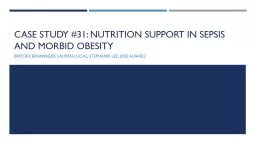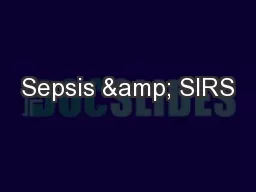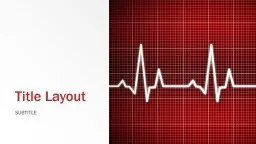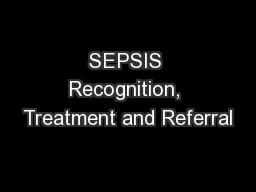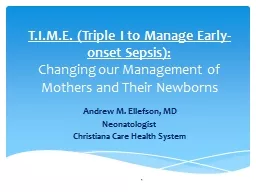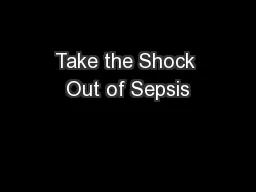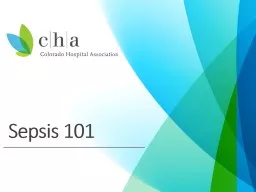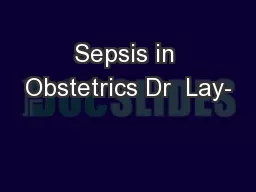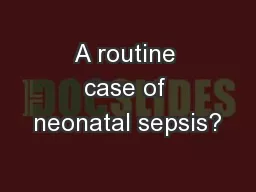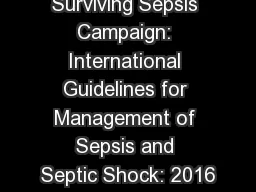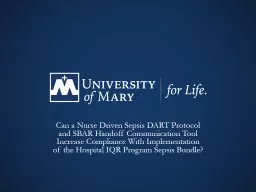PPT-SEPSIS EM Student Lecture Series
Author : PrettyLittlething | Published Date : 2022-07-27
CASE STUDY A 53year old woman presents complaining of several days of fever generalized malaise nausea amp vomiting She has a PMH of diabetes and HTN and takes
Presentation Embed Code
Download Presentation
Download Presentation The PPT/PDF document "SEPSIS EM Student Lecture Series" is the property of its rightful owner. Permission is granted to download and print the materials on this website for personal, non-commercial use only, and to display it on your personal computer provided you do not modify the materials and that you retain all copyright notices contained in the materials. By downloading content from our website, you accept the terms of this agreement.
SEPSIS EM Student Lecture Series: Transcript
Download Rules Of Document
"SEPSIS EM Student Lecture Series"The content belongs to its owner. You may download and print it for personal use, without modification, and keep all copyright notices. By downloading, you agree to these terms.
Related Documents

